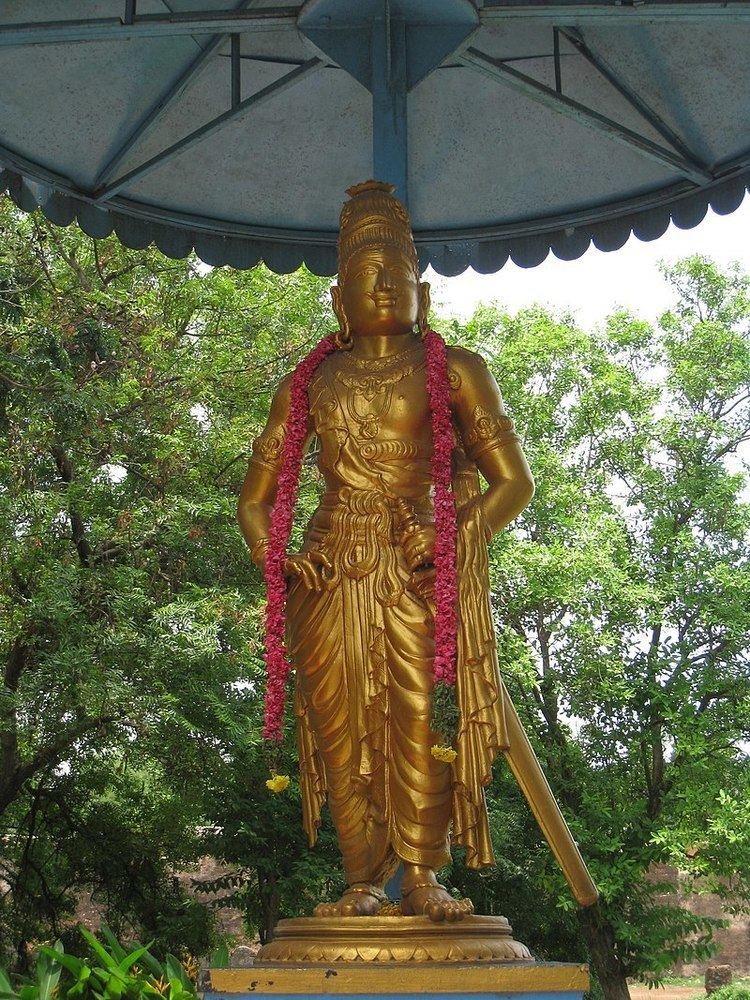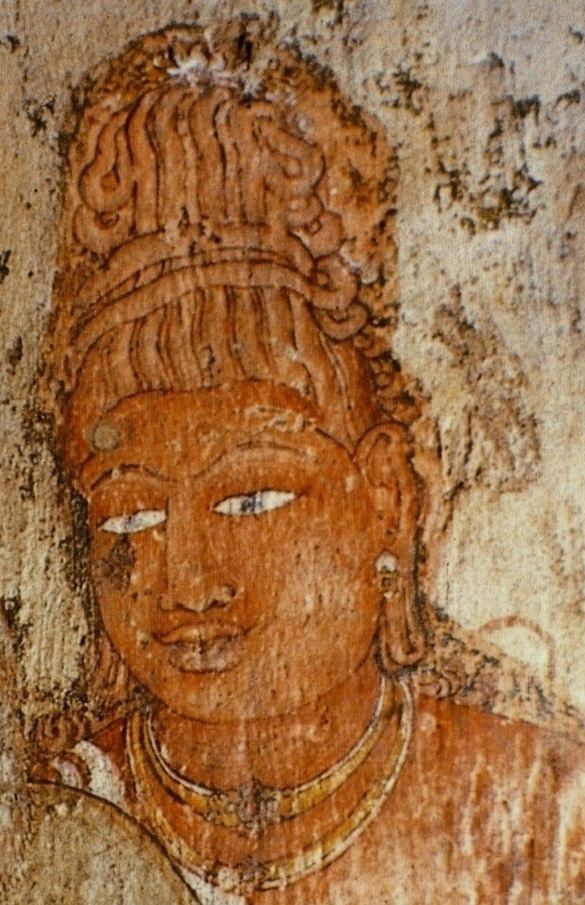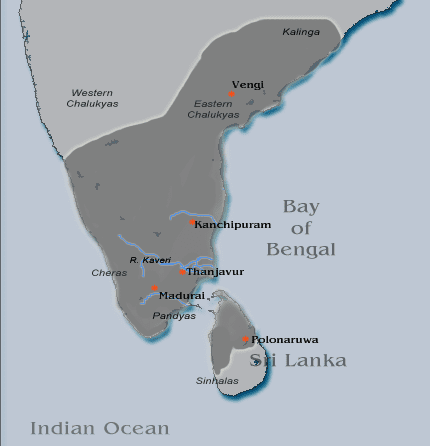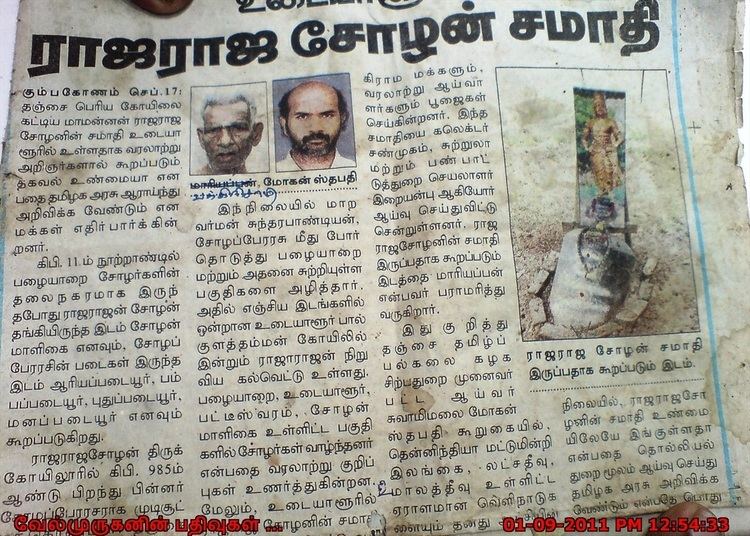Reign 985–1014 Died 1014 | Role King Name Raja Chola | |
 | ||
Issue Rajendra Chola I, Kundavai, Mathevalzagal, Gangamadevi Parents Parantaka Chola II, Vanavan Maha Devi Similar People Rajendra Chola I, Kundavai, Aditya Karikalan, A P Nagarajan | ||
The greatest king of the Chola Empire - Raja Raja Chola I II CHOLA DYNASTY II HISTORY INDUS II
Raja Raja Chola I (or Rajaraja Chola I) was a renowned king who ruled over the Chola kingdom of southern India between 985 and 1014 CE. During his reign, the Cholas expanded beyond South India with their domains stretching from Sri Lanka in the south to Kalinga in the north. Raja Raja Chola also launched several naval campaigns that resulted in the capture of the Malabar Coast as well as the Maldives and Sri Lanka.
Contents
- The greatest king of the Chola Empire Raja Raja Chola I II CHOLA DYNASTY II HISTORY INDUS II
- The King Raja Raja Chola
- Background
- Military conquests
- Early campaigns
- Conquest of Sri Lanka
- Chalukyan conflict
- Kalinga conquest
- Naval expedition
- Administration
- Officials
- Religious policy
- Arts and architecture
- Brihadisvara Temple
- Coins
- Inscriptions
- In popular culture
- References

Raja Raja built the Brihadeeswarar Temple in Thanjavur, one of the largest Hindu temples. During his reign, the texts of the Tamil poets Appar, Sambandar and Sundarar were collected and edited into one compilation called Thirumurai. He initiated a massive project of land survey and assessment in 1000 which led to the reorganization of the country into individual units known as valanadus. Raja Raja Chola died in 1014 and was succeeded by his son Rajendra Chola.

The King - Raja Raja Chola
Background

Raja Raja was born in 947 in Aipassi month on the day of Sadhayam star. He was the third child of Parantaka Sundara Chola and Vanavan Maha Devi of the Velir Malayaman dynasty and was named Arulmozhi Varman. He had an elder brother Aditya Karikalan and an elder sister Kundavai. Aditya Karikalan, the crown prince was assassinated in suspicious circumstances in 969. After the death of Aditya, Sundara Chola announced that Uttama Chola will succeed him to the throne. Arulmozhivarman ascended the throne after the death of Uttama Chola in 985. The Thiruvalangadu copper-plate inscriptions state that Raja Raja was elected through a democratic process followed by the Cholas.

Raja Raja's adopted name Raja Raja literally means "King of Kings". He was also known as Rajaraja Sivapada Sekhara (he who had the feet of Lord Shiva as his crown). His elder sister Kundavai Pirāttiyār assisted Raja Raja in administration and management of temples. Raja Raja had at least four queens including Ōlōkamādēviyār and Thiripuvānamādēviyār and at least three daughters. He had a son Rajendra with Thiripuvānamādēviyār. His first daughter Kundavai married Chalukya prince Vimaladithan. He had two other daughters named Mathevalzagal and Ģangamādevī. Raja Raja died in 1014 in the Tamil month of Maka and was succeeded by Rajendra Chola I.
Military conquests

Rajaraja created a powerful standing army and a considerable navy. A number of regiments are mentioned in the Thanjavur inscriptions. These regiments were divided into elephant troops, cavalry and infantry and each of these regiments had its own autonomy and was free to endow benefactions or build temples.
Early campaigns

Rajaraja began his first campaign in the eighth year of his reign. The Pandyas, Cheras and the Sinhalas allied against the Cholas. In 994, Rajaraja destroyed the fleet of the Chera king Bhaskara Ravi Varman Thiruvadi (c. 978–1036) in the Kandalur War. Rajaraja defeated the Pandya king Amarabhujanga and captured the port of Virinam. To commemorate these conquests, Rajaraja assumed the title Mummudi Chola, a title used by Tamil kings who ruled the three kingdoms of Cholas, Pandyas and Cheras. In 1008, Rajaraja captured Udagai from Cheras and Rajendra Chola I led the Chola army in this battle.
Conquest of Sri Lanka
Mahinda V was the king of Sinhalese. In 991, Mahinda’s army mutinied with help from mercenaries from Kerala with Mahinda seeking refuge in the southern region of Ruhuna. Rajaraja invaded Ceylon in 993. The Thiruvalangadu copper-plate inscriptions mention that Rajaraja’s army crossed the ocean by ships and destroyed Anuradhapura, the 1400-year-old capital of Sinhalas. Cholas made the city of Polonnaruwa as the capital and renamed it Jananathamangalam. Rajaraja built a Siva temple in Pollonaruwa to commemorate the victory. Raja Raja captured only the northern part of Sri Lanka while the southern part remained independent. His son Rajendra Chola captured the island in 1017 and the Chola reign in Sri Lanka was ended by Vijayabahu I in 1070.
Chalukyan conflict
In 998, Rajaraja captured the regions of Gangapadi, Nolambapadi and Tadigaipadi (present day Karnataka). Raja Chola extinguished the Nolambas, who were the feudatories of Ganga while conquering and annexing Nolambapadi. The conquered provinces were originally feudatories of the Rashtrakutas. In 973, the Rashtrakutas were defeated by the Western Chalukyas leading to direct conflict with Cholas. An inscription of Irivabedanga Satyashraya from Dharwar describes him as a vassal of the Western Chalukyas and acknowledges the Chola onslaught. In the same inscription, he accuses Rajendra of having arrived with a force of 955,000 and of having gone on rampage in Donuwara thereby blurring the moralities of war as laid out in the Dharmasastras. Historians like James Heitzman and Wolfgang Schenkluhn conclude that this confrontation displayed the degree of animosity on a personal level between the rulers of the Chola and the Chalukya kingdoms drawing a parallel between the enmity between the Chalukyas of Badami and the Pallavas of Kanchi.
There were encounters between the Cholas and the Hoysalas, who were vassals of the Western Chalukyas. An inscription from the Gopalakrishna temple at Narasipur dated to 1006 records that Rajaraja's general Aprameya killed minister Naganna and other generals of the Hoysalas. A similar inscription in Channapatna also describes Rajaraja defeating the Hoysalas. Vengi kingdom was ruled by Jata Choda Bhima of the Eastern Chalukyas dynasty. Jata Choda Bhima was defeated by Raja Raja and Saktivarman was placed on the throne of Vengi as a viceroy of the Chola Dynasty. After the withdrawal of the Chola army, Bhima captured Kanchi in 1001. Raja Raja expelled and killed Bhima before re-establishing Saktivarman I on the throne of Vengi again. Raja Raja gave his daughter Kundavai in marriage to his next viceroy of Vengi Vimaladitya which brought about the union of the Chola Dynasty and the Eastern Chalukya Kingdom and which also ensured that the descendants of Raja Raja Chola would rule the Eastern Chalukya kingdom in the future.
Kalinga conquest
The invasion of the kingdom of Kalinga occurred after the conquest of Vengi.
Naval expedition
One of the last conquests of Raja Raja was the naval conquest of the islands of Maldives. The realization of the importance of a good navy and the desire to neutralize the emerging Chera Naval power were probably the reasons for the Kandalur campaign in the early days of Rajaraja’s reign. The Cholas controlled the area around of Bay of Bengal with Nagapattinam as the main port. The Chola Navy also had played a major role in the invasion of Sri Lanka. The success of Raja Raja allowed his son Rajendra Chola to lead the Chola invasion of Srivijaya, carrying out naval raids in South-East Asia and briefly occupying Kadaram.
Administration
Before the reign of Raja Raja I, parts of the Chola territory were ruled by hereditary lords and princes who were in a loose alliance with the Chola rulers. Raja Raja initiated a project of land survey and assessment in 1000 which led to the reorganization of the empire into units known as valanadus. From the reign of Raja Raja Chola I until the reign of Vikrama Chola in 1133, the hereditary lords and local princes were either replaced or turned into dependent officials. This led to the king exercising a closer control over the different parts of the empire. Rajaraja strengthened the local self-government and installed a system of audit and control by which the village assemblies and other public bodies were held to account while retaining their autonomy. To promote trade, he sent the first Chola mission to China.
Officials
Rajendra Chola I was made a co-regent during the last years of Rajaraja’s rule. He was the supreme commander of the northern and northwestern dominions. During the reign of Raja Chola, there was an expansion of the administrative structure leading to the increase in the number of offices and officials in the Chola records than during earlier periods. Villavan Muvendavelan, one of the top officials of Raja Raja figures in many of his inscriptions. The other names of officials found in the inscriptions are the Bana prince Narasimhavarman, a general Senapathi Krishnan Raman, the Samantha chief Vallavaraiyan Vandiyadevan, the revenue official Irayiravan Pallavarayan and Kuruvan Ulagalandan, who organised the country-wide land surveys.
Religious policy
Rajaraja was a follower of Shaivism school of Hinduism. He was tolerant towards other faiths and had several temples for Vishnu constructed and encouraged the construction of the Buddhist Chudamani Vihara at the request of the Srivijaya king Sri Maravijayatungavarman. Rajaraja dedicated the proceeds of the revenue from the village of Anaimangalam towards the upkeep of this Vihara.
Arts and architecture
Raja Raja Chola embarked on a mission to recover the hymns after hearing short excerpts of Thevaram in his court. He sought the help of Nambi Andar Nambi. It is believed that by divine intervention Nambi found the presence of scripts, in the form of cadijam leaves half eaten by white ants in a chamber inside the second precinct in Thillai Nataraja Temple, Chidambaram. The brahmanas (Dikshitars) in the temple opposed the mission, but Rajaraja intervened by consecrating the images of the saint-poets through the streets of Chidambaram. Rajaraja thus became to be known as Tirumurai Kanda Cholan meaning one who saved the Tirumurai. Thus far Shiva temples only had images of god forms, but after the advent of Rajaraja, the images of the Nayanar saints were also placed inside the temple. Nambi arranged the hymns of three saint poets Sambandar, Appar and Sundarar as the first seven books, Manickavasagar's Tirukovayar and Tiruvacakam as the 8th book, the 28 hymns of nine other saints as the 9th book, the Tirumandiram of Tirumular as the 10th book, 40 hymns by 12 other poets as the 10th book, Tirutotanar Tiruvanthathi - the sacred anthathi of the labours of the 63 nayanar saints and added his own hymns as the 11th book. The first seven books were later called as Tevaram, and the whole Saiva canon, to which was added, as the 12th book, Sekkizhar's Periya Puranam (1135) is wholly known as Tirumurai, the holy book. Thus Saiva literature which covers about 600 years of religious, philosophical and literary development.
Brihadisvara Temple
In 1010, Raja Raja built the Brihadisvara Temple in Thanjavur dedicated to Lord Shiva. The temple and the capital acted as a center of both religious and economic activity. It is also known as Periya Kovil, RajaRajeswara Temple and Rajarajeswaram. It is one of the largest temples in India and is an example of Dravidian architecture during the Chola period. The temple turned 1000 years old in 2010. The temple is part of the UNESCO World Heritage Site known as the "Great Living Chola Temples", with the other two being the Gangaikonda Cholapuram and Airavatesvara temple.
The vimanam (temple tower) is 216 ft (66 m) high and is the tallest in the world. The Kumbam (the apex or the bulbous structure on the top) of the temple is carved out of a single rock and weighs around 80 tons. There is a big statue of Nandi (sacred bull), carved out of a single rock measuring about 16 feet long and 13 feet high at the entrance. The entire temple structure is made out of granite, the nearest sources of which are about 60 km to the west of temple. The temple is one of the most visited tourist attractions in Tamil Nadu.
Coins
Before the reign of Raja Raja Chola the Chola coins had on the obverse the tiger emblem and the fish and bow emblems of the Pandya and Chera Dynasties and on the reverse the name of the King. But during the reign of Raja Raja Chola appeared a new type of coins. The new coins had on the obverse the figure of the standing king and on the reverse the seated goddess. The coins spread over a great part of South India and were also copied by the kings of Sri Lanka.
Inscriptions
Due to Rajaraja's desire to record his military achievements, he recorded the important events of his life in stones. An inscription in Tamil from Mulbagal in Karnataka shows his accomplishments as early as the 19th year. An excerpt from such a Meikeerthi, an inscription recording great accomplishments, follows:
Rajaraja recorded all the grants made to the Thanjavur temple and his achievements. He also preserved the records of his predecessors. An inscription of his reign found at Tirumalavadi records an order of the king to the effect that the central shrine of the Vaidyanatha temple at the place should be rebuilt and that, before pulling down the walls, the inscriptions engraved on them should be copied in a book. The records were subsequently re-engraved on the walls from the book after the rebuilding was finished.
